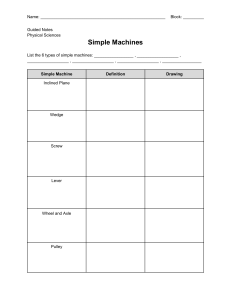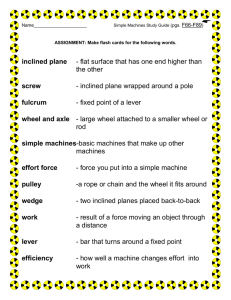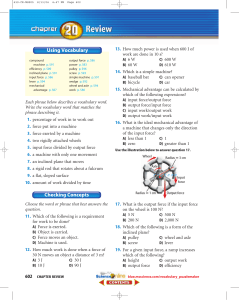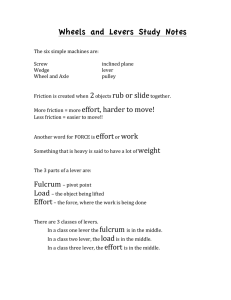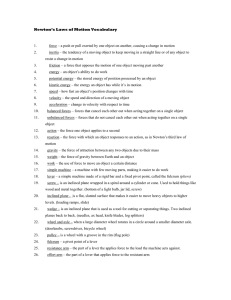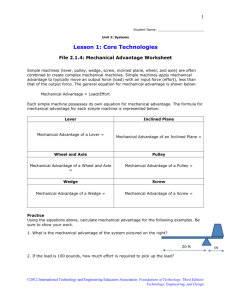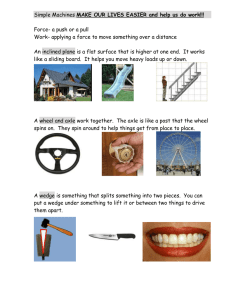File 1.1.1a summary sheet
advertisement
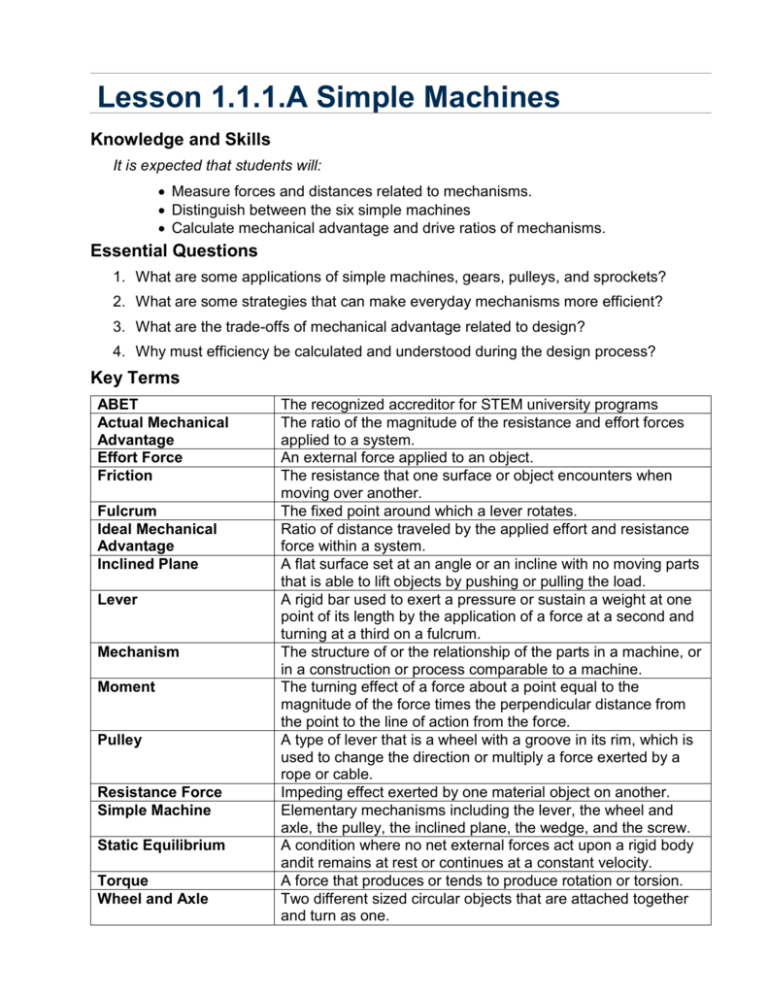
Lesson 1.1.1.A Simple Machines Knowledge and Skills It is expected that students will: Measure forces and distances related to mechanisms. Distinguish between the six simple machines Calculate mechanical advantage and drive ratios of mechanisms. Essential Questions 1. What are some applications of simple machines, gears, pulleys, and sprockets? 2. What are some strategies that can make everyday mechanisms more efficient? 3. What are the trade-offs of mechanical advantage related to design? 4. Why must efficiency be calculated and understood during the design process? Key Terms ABET Actual Mechanical Advantage Effort Force Friction Fulcrum Ideal Mechanical Advantage Inclined Plane Lever Mechanism Moment Pulley Resistance Force Simple Machine Static Equilibrium Torque Wheel and Axle The recognized accreditor for STEM university programs The ratio of the magnitude of the resistance and effort forces applied to a system. An external force applied to an object. The resistance that one surface or object encounters when moving over another. The fixed point around which a lever rotates. Ratio of distance traveled by the applied effort and resistance force within a system. A flat surface set at an angle or an incline with no moving parts that is able to lift objects by pushing or pulling the load. A rigid bar used to exert a pressure or sustain a weight at one point of its length by the application of a force at a second and turning at a third on a fulcrum. The structure of or the relationship of the parts in a machine, or in a construction or process comparable to a machine. The turning effect of a force about a point equal to the magnitude of the force times the perpendicular distance from the point to the line of action from the force. A type of lever that is a wheel with a groove in its rim, which is used to change the direction or multiply a force exerted by a rope or cable. Impeding effect exerted by one material object on another. Elementary mechanisms including the lever, the wheel and axle, the pulley, the inclined plane, the wedge, and the screw. A condition where no net external forces act upon a rigid body andit remains at rest or continues at a constant velocity. A force that produces or tends to produce rotation or torsion. Two different sized circular objects that are attached together and turn as one.
